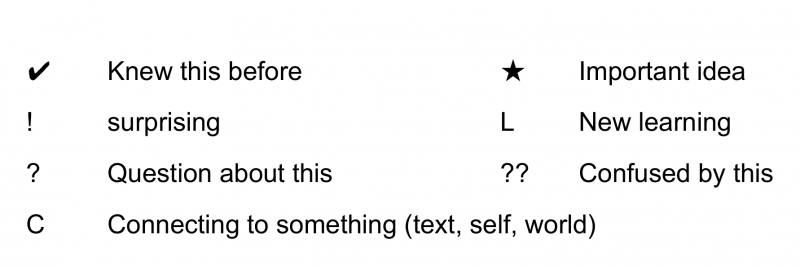Marking Text

Student makes notes in a book he is reading (Topalov, iStockphoto)
This strategy helps students make sense of the text they are interacting with.
Why use it?
- To invite students to engage more deeply with text.
- To increase reading comprehension
- To help students identify important ideas and questions about a text
Tips for success
- Create a list of suggested text marking symbols. Display somewhere that students can see.
How do I use it?
- Introduce or co-construct text marking symbols such as:
Image - Text Version
Shown are examples of symbols that could be used to mark texts. A check indicates something that you knew before. A exclamation point indicates something surprising. A question mark indicates that you have a question about this. The letter "C" means that you connected to something (text, self, or world). A star indicates an important idea. The letter "L" indicates new learning. Two question marks indicates that you are confused by this.
- Model with students how to mark up their text using these symbols before expecting them to use them independently.
- After using the symbols, invite students to reflect about how marking text supported thinking about the text
Variations
- Encourage learners to develop their own “mark legend” for use while reading.
- If learners are not able to write in their texts, sticky notes can accomplish a similar awareness while reading.
- A study skill to develop is to have learners read back through their own notes in a subject area and mark it up to indicate whether they understand a concept (✓) or have questions about a concept (?). This can help to narrow their focus during review and to signal that they need help from peers or a teacher.
References
Adapted from: Alvord Unified School District. (n.d.). Marking the Text.
